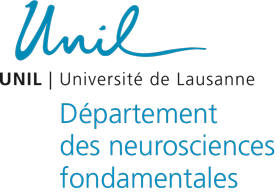PRESENTATION
Stroke is a major public health issue worldwide. In Switzerland, it is the third cause of death and the main cause of disability in adults. More than seven hundred patients are admitted every year to Lausanne University Hospital (CHUV) for an acute stroke or transient ischemic attack.
Lorenz Hirt and his team use an experimental approach to study stroke and the underlying tissue damage. Their primary focus is investigating changes within the many cells of the neurovascular unit following an ischemic event and evaluating neuroprotective approaches, including administering lactate post-ischemia. Additionally, they explore the potential of other metabolites, including those originating from the gut microbiota as a prospective innovative avenue to enhance stroke recovery by influencing the brain barriers. Preclinical studies in the Hirt lab and other laboratories indicated a beneficial impact of lactate in stroke and other brain injuries, prompting the Hirt lab to take a translational approach and conduct a clinical trial administering lactate to acute stroke patients.
Their long-term aim is to identify new diagnostic and therapeutic options for stroke.


